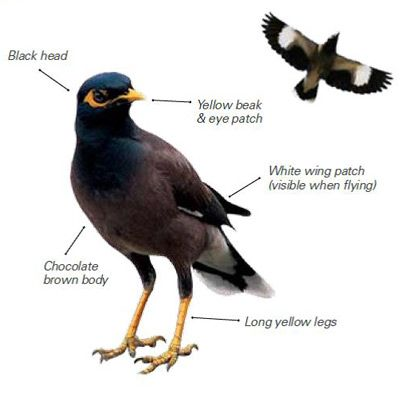Help needed to battle local pest
Kristin Murdock
18 January 2023, 6:44 AM
 Traps are beng built to catch Indian Mynas around the Western Plains as part of the DIMCP.
Traps are beng built to catch Indian Mynas around the Western Plains as part of the DIMCP.There are only three birds listed on the International Union for Conservation of Nature's (IUCN) list of the 100 most invasive species on the planet, and the Indian myna is one of them. Unfortunately the bird is becoming more common across the Western Plains, prompting the establishment of The Dubbo Indian Myna Control Program (DIMCP) in March last year following a call for support from Wongarbon resident, Damien Sallustio, to Dubbo Environment Group’s President, Margaret Mcdonald.
Now DIMCP President and a passionate environmental advocate, Ms McDonald was successful in applying for funding through the Central West Local Land Services (CWLLS)and has been instrumental in setting up a program to trap and dispose of the birds.
"Ten years ago, we hardly saw Indian Myna's in the western region," Ms McDonald said. "Now we are seeing more and more of them."
Most prevalent along the eastern coast, Indian Myna's are now seen as far west as Cobar, Carinda, the Macquarie Marshes and Lightning Ridge.
"The Indian Myna will become a huge nuisance if not kept in check," Ms McDonald said. "They are vicious and outcompete native birds. They will nest in hollows and dispose of eggs and babies and even attack the parents. Flocks of eight to ten birds will attack in a group and they breed prolifically, producing up to 24 chicks per pair."
DIMCP uses funding from CW Local Land Services, Dubbo Environment Group, Charles Sturt University and Dubbo Regional Council to purchase wire mesh and single traps and also for the construction and maintenance of two aviary traps.
"We have four trap builders," Ms McDonald said. "Within only one week, Kage Milsom, who donates the traps he builds, eradicated 38 Indian Mynas in the village of Leadville. As a result, he has also reported seeing again the rosellas which had disappeared in the previous year." Traps from builders have been lent or purchased in Dubbo, Elong Elong, Geurie, Wongarbon, Mumble, Wellington, Narromine, Coonabarabran, Mendooran, Coolah, Trangie, Molong, Dunedoo, Leadville, Neilrex, Tooraweenah, Gilgandra, Coonamble, Cassilis, Merriwa and Lake Cargelligo.
With support and communication between CWLLS’s Invasive Species Officer, Nigel Boyce, and the DIMCP, there is now assistance to coordinate and distribute traps in Dunedoo, Gilgandra and Coonabarabran.

Men's Sheds in Dunedoo and Coonabarabran also build traps which can be purchased.
"Mynas are attracted by feed left out for chooks and horses and will continue to spread unchecked if we don't do something," Ms McDonald said. "In Dubbo and the Central West we would like support everywhere. So far we have eradicated over 500 birds. The Canberra Indian Myna Action Group has proven that control is possible. When their program began, mynas were the third most common bird in the region. The latest survey results have them now down to the 24th most common bird. 79,000 mynas having been removed from the local environment by the Canberra group."
The group is looking for drop off locations for traps throughout the local area. Contact can be made via their Facebook group.
DIMCP lends traps in a 70km radius from Dubbo with a $10 deposit. Further afield, the traps can be purchased for $70. For further information or to help out, contact Margaret McDonald on 0438821973.


